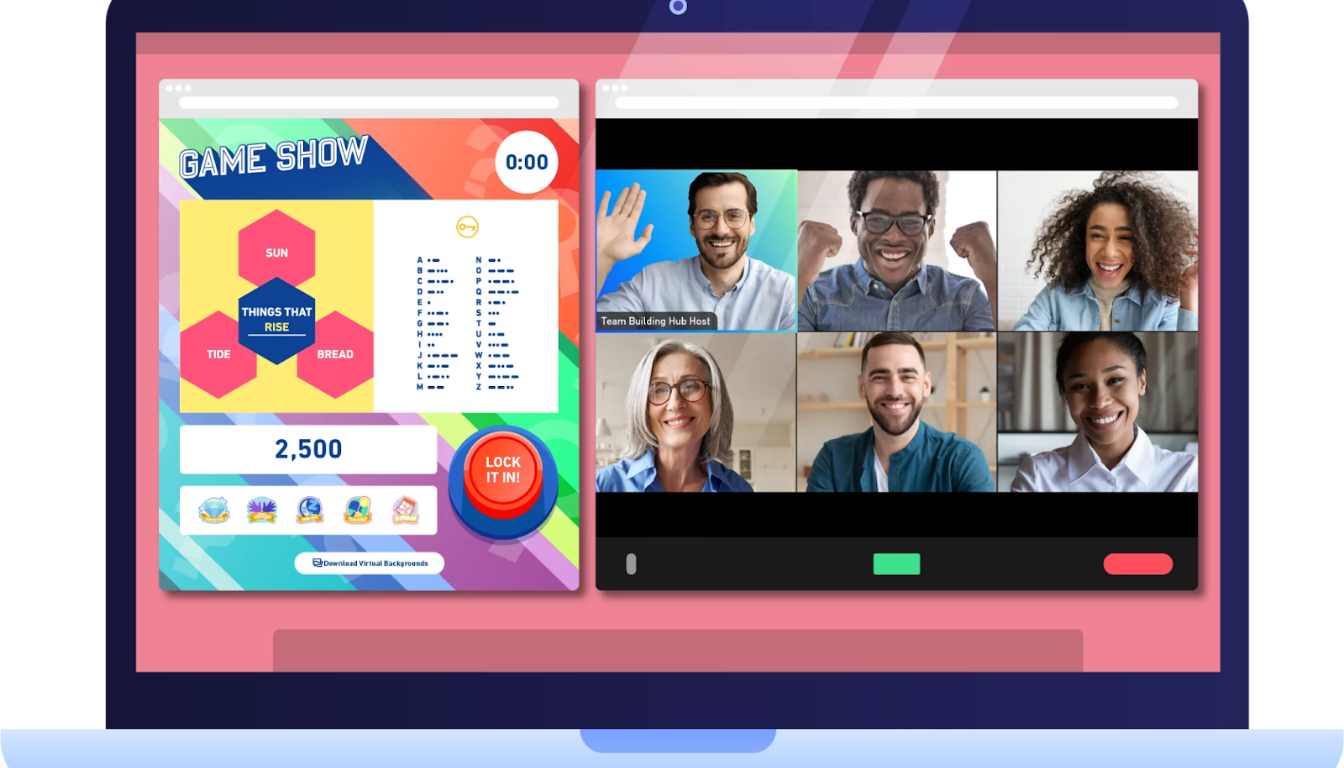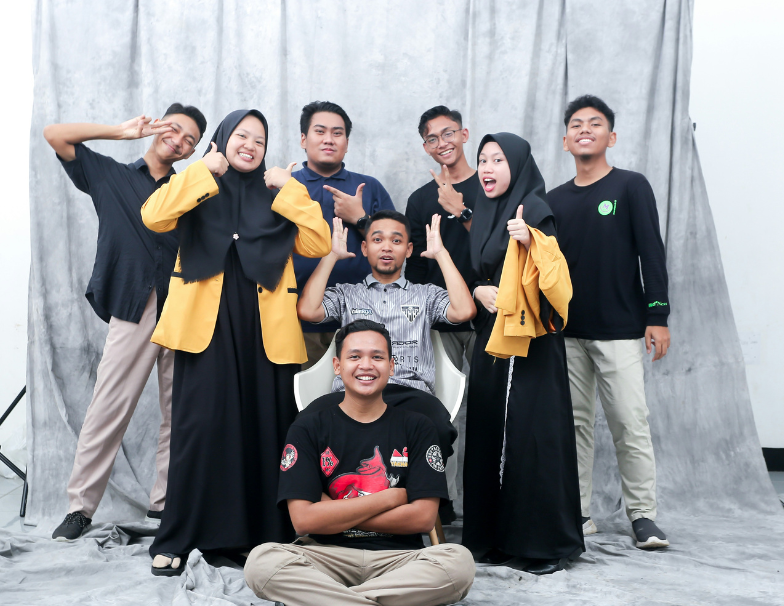Top Training in Team Building Activities for 2025

is the best approach. This article covers everything you need to know, from the importance of team building and effective training strategies to engaging activities and measuring their impact.
Key Takeaways
- Practical team building training enhances collaboration, reduces conflicts, and improves overall organizational culture by fostering open communication and trust among team members.
- Key elements of successful team building include setting clear goals, promoting open communication, and celebrating team successes to boost morale and commitment.
- Customizing team building activities to align with an organization’s specific goals and dynamics is essential for maximizing the impact and effectiveness of training.
Understanding the Importance of Team Building Training

Team building transforms individuals into a cohesive unit, enhancing collaboration and reducing misalignments. In any organization, the strength of the team directly impacts overall performance and success. Effective team building promotes open communication, enabling employees to share ideas and collaborate more efficiently. When team members communicate openly, they are more likely to understand each other’s strengths, weaknesses, and working styles, which leads to better teamwork and fewer conflicts.
Meaningful team bonding activities foster connections that enhance team spirit and promote a positive organizational culture. These activities promote an environment where employees feel valued and appreciated, which in turn improves job satisfaction and reduces turnover. Investing in team building activities fosters a positive work environment that enhances productivity and boosts employee morale. When employees feel connected and engaged, they are more motivated to contribute to the team’s success.
Team building activities help identify and resolve barriers to collaboration and foster understanding among employees. These activities allow team members to address underlying issues and develop solutions collaboratively. Activities that encourage teamwork are essential, as they promote effective communication and foster trust among team members. Strong peer relationships fostered through team building activities lead to increased job satisfaction and employee engagement.
Effective team building lays the groundwork for resilience, innovation, and job satisfaction in the workplace. In a rapidly changing business environment, cohesive team dynamics that can adapt and innovate are more likely to succeed. Strong team bonds and an established team culture help organizations navigate challenges and achieve their goals, enhancing their leadership skills and ultimately contributing to the team’s success, while fostering a positive company culture.
Key Elements of Effective Team Building Training
Identifying a team’s purpose is crucial, as it provides a shared goal that inspires collective effort among members. When team members understand the purpose of their work, they are more motivated to contribute and align their efforts with the team’s objectives. Clear goal-setting enhances teamwork by:
- Defining success
- Fostering shared ownership
- Enabling teams to track progress
- Allowing teams to celebrate achievements collectively
Specific, measurable goals support these benefits.
Encouraging open communication helps build trust and fosters collaboration among team members. Open communication is fundamental, promoting confidence and cooperation among team members. When team members feel comfortable sharing their ideas and feedback, they are more likely to work together effectively and resolve conflicts constructively. Empowering team members to make decisions fosters a culture of trust and accountability. When team members are trusted to make decisions, they feel more valued and are more likely to take ownership of their work.
Promoting team collaboration requires:
- Creating an environment where all team members feel heard and valued.
- Providing continued learning opportunities to maintain team productivity and cohesion.
- Encouraging collaboration by offering opportunities for collective learning and growth to foster a culture of continuous improvement and innovation.
Celebrating successes boosts team morale and reinforces positive group dynamics. Recognizing and rewarding team achievements not only motivates team members but also strengthens their commitment to the team’s goals. Feedback activities in team building create space for honest communication, helping build trust and openness. Regularly soliciting and acting on feedback helps teams continuously improve performance and address arising issues.
Proven Strategies for Successful Team Building Training
Team building activities are often viewed negatively by employees, as they can feel forced or ineffective. To counter this, consider the following:
- Activities should be engaging and relevant to the team’s needs.
- Team building training can include various forms of engagement, such as workshops and retreats, to foster connections.
- A practical team building workshop should feature a balanced agenda of activities and discussions to maintain engagement.
The Team Canvas Session helps align team members on shared goals and roles, which is crucial for effective team building. This structured approach ensures that everyone is aligned and working towards common objectives. Innovative tools like SessionLab can help create structured agendas for team building sessions. These tools help facilitators design activities that are both engaging and impactful.
Workshops should also focus on enhancing the emotional culture within teams to foster collaborative success. Focusing on the emotional aspects of teamwork helps create a supportive and empathetic work environment. Scavenger hunts are an effective way to encourage teamwork and collaboration among team members. These activities are both fun and engaging, making them an excellent way to build team bonds.
Factors to consider when selecting team building games include group size, objectives, and the setting. Office-friendly board games are great for fostering collaboration among employees. Jigsaw puzzles also help build teamwork. Selecting activities that are suitable for the team’s size and dynamics ensures that everyone participates and benefits.
Engaging Team Building Activities for Office Teams

Team building activities help improve team alignment and collective purpose. For office teams, a variety of activities can be implemented to foster collaboration and engagement. The variety of team building activities includes:
- Icebreakers
- Problem-solving exercises
- Communication games
- Creative exercises, Incorporating a mix of activities, enhance team dynamics and improve workplace morale through effective team building strategies.
Engaging in team building activities can enhance team dynamics and workplace morale. These activities include:
- Icebreaker games help new team members get acquainted and build connections with one another.
- Regular problem-solving activities foster collaboration and creative thinking.
- Check-in activities enable team members to share their current state and foster connections among colleagues.
Overall, implementing a combination of these activities leads to improved team dynamics and workplace morale, which can enhance the morale of the entire team.
Next, we will explore specific types of activities that can be used in an office team setting, including icebreaker games, problem-solving exercises, and fun team building games.
Icebreaker Games for New Team Members
Icebreaker games are designed to foster personal relationships and enhance interpersonal connections between team members, thereby increasing knowledge of colleagues’ activities and hobbies. These fun game activities are especially beneficial for new team members, helping them integrate more smoothly into the team. Activities such as ‘A penny for your thoughts’ and ‘Two truths, one lie’ foster sharing unique aspects of participants’ lives, creating commonalities, and enhancing understanding.
Popular icebreaker activities include:
- ‘Speed networking’: ideal for larger groups
- ‘One-word icebreaker’
- ‘Whodunit’
- ‘Two truths, one lie’: best suited for three or more people, ensuring effective participation
These activities encourage interaction and team bonding, enhance team connections, and help move the team forward by exploring team bond alignment.
Implementing these icebreaker games at the beginning of a team building event can set a positive tone and encourage open communication among team members. ‘Life Map’ and ‘Portrait Gallery’ are also practical and quick team building activities that promote collaboration and creativity among participants.
Problem-Solving Exercises to Enhance Collaboration
Problem-solving exercises encourage creativity by inspiring out-of-the-box thinking and innovative creative problem-solving. These activities are essential for enhancing collaboration within teams, as they require participants to work together to find solutions. A strategic and well-thought-out approach can greatly benefit teams in improving their cooperation.
The activities and their purposes are:
- The Marshmallow Challenge promotes innovation and teamwork, enabling participants to construct the tallest freestanding structure made entirely of marshmallows.
- The Egg Drop exercise tests problem-solving and collaboration skills through a fun and engaging activity.
- The Minefield activity fosters trust and partnership among colleagues by requiring them to coordinate their movements to navigate a space filled with obstacles.
The Pencil Precision exercise enhances communication skills and teamwork among participants. The Paper Tower Challenge develops teamwork, communication, adaptability, and problem-solving skills. Engaging in these exercises helps create cohesive teams that operate with integrity and develop practical communication skills.
Fun Team Building Games to Boost Engagement
Engagement in team building activities can be enhanced through fun team building activities that foster connections. These games are designed to boost team spirit and create a positive work environment. Team building exercises, such as the Code Break exercise, are essential because they can create a competitive environment while requiring creativity and teamwork. A team building exercise works effectively to strengthen these bonds.
Team games and their benefits include:
- Swift Swap: works best with 10–20 participants, enhancing group interaction and collaboration.
- The Human Knot emphasizes close communication, promoting mutual trust and developing problem-solving skills.
- The Birthday Lineup allows participants to use sign language or gestures, thereby enhancing non-verbal communication.
Activities like the Common Thread game promote team bonding by encouraging members to find commonalities. Games that challenge problem-solving, like Build a Tower, improve communication and teamwork skills. To maximize the benefits of these games, ensure that you select activities suitable for your team’s size and dynamics.
Remote Team Building Activities for Virtual Teams

Remote teams face unique challenges in building camaraderie, requiring creative virtual activities. The lack of physical presence can make it harder for team members to bond and communicate effectively. One of the challenges for hybrid or remote teams in terms of team building is finding opportunities to foster team bonding. However, team building activities can be effectively adapted for remote teams with creativity.
Virtual team building activities help maintain employee morale and foster connections despite physical distances. Facilitating virtual team building activities can be easily done using Zoom or other remote work software. Pictionary on a Zoom call is a recommended activity for engaging remote teams.
Next, we will explore specific types of virtual activities that can be used to engage remote teams, including virtual icebreakers, online problem-solving challenges, and digital escape rooms.
Virtual Icebreakers for Remote Teams
Casual video calls, such as virtual coffee chats, provide opportunities for team members to bond on a personal level. These informal interactions help build personal relationships and improve team dynamics. The morning coffee team building activity requires a minimum of 3 people and typically lasts between a few minutes and 30 minutes.
Virtual icebreakers are an excellent way to begin a remote team meeting and establish a positive tone for the rest of the session. These activities help new team members get acquainted and build connections, similar to in-person icebreakers. Incorporating virtual icebreakers in regular meetings helps remote teams maintain strong connections and a sense of community.
Implementing virtual icebreakers at the beginning of a meeting can encourage open communication and make remote team members feel more connected. These activities are essential for maintaining team cohesion and ensuring that remote teams work effectively together during the next team meeting.
Online Problem-Solving Challenges
Engaging in online games boosts teamwork and problem-solving skills in a relaxed environment. These challenges are crucial for fostering collaboration and preserving team dynamics in a remote setting. Online problem-solving challenges encourage creative thinking and enhance team members' capabilities to collaborate on tackling challenges.
Activities like virtual scavenger hunts can be implemented by having team members find items around their house to share. These activities are both fun and engaging, making them an excellent way to build team bonds. Online challenges provide a fun and effective way for remote teams to bond while enhancing their problem-solving abilities.
By incorporating online problem-solving challenges into regular team meetings, remote teams can maintain strong connections and foster a sense of community. These activities are crucial for preserving team cohesion and ensuring that remote teams collaborate effectively.
Digital Escape Rooms for Team Bonding
Digital escape rooms are immersive online activities where teams solve puzzles, fostering a unique team bonding experience. These activities encourage collaboration and communication as teams work together to solve puzzles. The interactive nature of escape room digital activities creates a fun environment that increases team engagement and spirit.
Participating in digital escape rooms not only strengthens team bonds but also enhances collaborative problem-solving skills. These activities are ideal for remote teams seeking to foster strong connections despite physical distance. Collaborating to solve challenges helps team members understand each other’s strengths and working styles better.
Incorporating digital escape rooms into team building activities can help maintain high levels of engagement and collaboration among remote teams. These activities offer a unique and enjoyable way for team members to bond and enhance their problem-solving skills.
Outdoor Team Building Exercises for Large Groups
Outdoor team building exercises promote interaction without screen distractions, allowing team members to connect more effectively. Conducting team building exercises outdoors offers several benefits:
- Bonding in a natural setting with fresh air enhances the overall experience.
- Particularly effective for large groups, providing ample space for participants to move around.
- Opportunities to engage in various challenges.
Scavenger hunts can enhance communication as teams work together to solve clues, making it an effective activity for large groups. The Amazing Race format encourages teams to complete challenges while fostering healthy competition, making it an exciting experience for participants. These activities not only promote teamwork but also add an element of fun and adventure to the team building experience.
Rope courses help participants develop problem-solving and collaboration skills while facing physical challenges, suitable for larger groups. These courses require team members to work together to navigate obstacles, building trust and enhancing their ability to collaborate effectively.
Capture the Flag promotes strategic thinking as teams plan and execute their strategies to win, which is essential in group dynamics. Incorporating outdoor team building exercises creates a dynamic environment that fosters strong bonds and enhances team performance. These activities offer a refreshing break from the typical office setting, enabling team members to connect in new and meaningful ways.
Customizing Team Building Training for Your Organization
Effective planning of team building retreats requires:
- Setting clear objectives to achieve desired outcomes.
- Customizing team building training by aligning activities with specific goals and the unique needs of your team.
- Utilizing off-site training enables customized activities that closely align with specific organizational goals.
The team’s strengths, weaknesses, and areas for improvement enable you to design activities that address specific challenges and foster growth both horizontally and vertically. Custom team building activities can be designed to enhance communication, collaboration, and problem-solving skills, ensuring that the training is both relevant and impactful.
Offsite provides structure and expertise for impactful team building training. Their offerings include:
- Helping you design and implement activities tailored to your organization’s needs.
- Providing access to top team building resources and facilitators.
- Ensuring that your team building training is grounded in proven methodologies and best practices.
Custom development of training activities aligns with the unique needs of different teams and their objectives. Leveraging Offsite’s expertise helps create a comprehensive team building training program that drives success and fosters a positive work culture.
Measuring the Impact of Team Building Training
Measuring the impact of team building training is crucial for understanding its effectiveness and identifying areas for improvement. Key metrics for evaluating team building effectiveness include productivity levels and employee engagement scores. Tracking these metrics allows organizations to assess improvements in team dynamics and overall performance.
Key points in assessing the impact of team building efforts include:
- Comparing pre-activity and post-activity data to evaluate changes.
- Utilizing various data collection methods to enhance the comprehensiveness of evaluations.
- Collecting anonymous feedback from employees to increase the honesty of responses regarding team building experiences.
Post-retreat evaluations are essential for measuring success and identifying areas for improvement in future retreats. Gathering feedback from participants provides insights into what worked well and areas for improvement. Tracking team building activities helps identify areas that need additional training and development.
Assessing the building outcomes provides valuable insights into the effectiveness of team cohesion and collaboration. By continuously evaluating the impact of team building training, organizations can ensure that their efforts effectively drive team success and foster a positive work environment.
Leveraging Offsite for Comprehensive Team Building Training
Offsite training offers several benefits:
- Fosters an environment free from workplace distractions, promoting better focus and teamwork.
- Encourages stronger relationships among team members, enhancing collaboration and communication.
- Provides a fresh perspective by taking the team away from the usual work setting.
- Allows team members to connect on a deeper level.
Expert-led training ensures that:
- Team building activities are grounded in proven methodologies and best practices.
- Trained facilitators guide teams through challenges, ensuring constructive feedback and positive outcomes.
- Activities can be tailored to address specific team dynamics, organizational goals, or challenges that the team faces.
Custom development of training activities aligns with the unique needs of different teams and their objectives. Offsite venues offer several advantages:
- They can reduce the overall costs associated with employee training.
- They provide a more engaging environment. By leveraging Offsite’s expertise, organizations can:
- Create comprehensive team building training programs.
- Drive team success.
- Foster a positive work culture.
Offsite is a trusted partner for integrating team building activities and training into workplace culture. With Offsite, you can ensure that your team building training is impactful, engaging, and tailored to your organization’s unique needs.
Summary
Team building activities are essential for fostering strong communication, collaboration, and team development. By understanding the importance of team building and incorporating key elements such as goal-setting, open communication, and celebrating successes, organizations can create effective training programs that drive team success.
Proven strategies for successful team building training include workshops, retreats, and innovative tools like the Team Canvas Session. Engaging team building activities, whether for office teams, remote teams, or large groups, can enhance team dynamics and boost morale. Customizing team building training to align with specific organizational goals ensures that the training is relevant and impactful.
Measuring the impact of team building training is crucial for understanding its effectiveness and identifying areas for improvement. By leveraging Offsite for comprehensive team building training, organizations can create structured and engaging programs that foster a positive work culture and drive team success.
Investing in team building activities is an investment in your team’s future. By fostering strong team bonds, enhancing communication, and promoting collaboration, organizations can create a work environment where everyone thrives. Take the time to plan and implement practical team building training, and watch your team soar to new heights.
FAQs
- What are the key benefits of team building activities?
Team building activities significantly enhance communication, collaboration, and team cohesion, leading to a positive work environment and improved overall team performance. Investing in such activities boosts employee morale, which in turn benefits the organization.
- How can we measure the impact of team building training?
To effectively measure the impact of team building training, focus on key metrics such as productivity levels and employee engagement scores by comparing data from before and after the training. Additionally, gathering anonymous feedback from employees will provide valuable insights into the effectiveness of the training.
- What are some practical team building activities for remote teams?
Engaging in virtual icebreakers, online problem-solving challenges, and digital escape rooms can significantly boost morale and strengthen connections within remote teams. Implementing these activities can create a more collaborative and cohesive team environment.
- How can we tailor team building training to our organization's specific needs?
To effectively customize team building training, align the activities with your organization's specific goals and the unique needs of your team. Utilizing off-site resources and expert facilitators can enhance the impact of the training.
You may also like
Unique spaces for your next offsite
Find distinctive venues for your upcoming corporate retreat.
Stay Updated with Our Insights
Get exclusive content and valuable updates directly to you.







